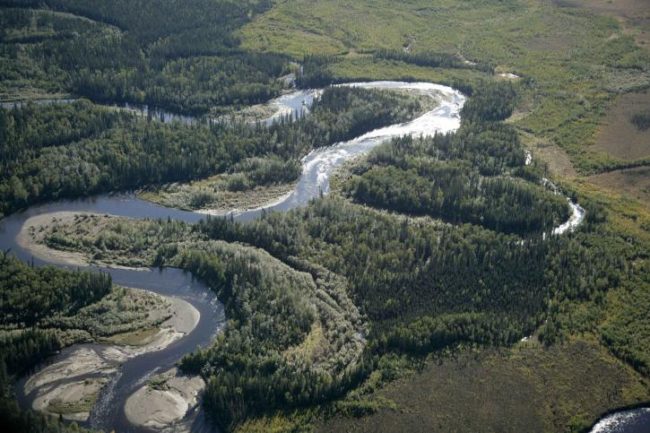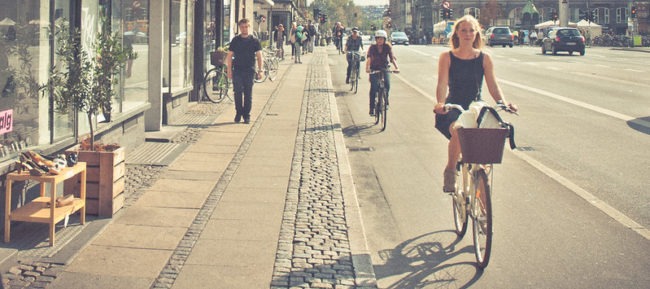Earth Overshoot Day is the date when humanity’s demand for ecological resources exceeds what the Earth can regenerate in that year
Since 1971, this date has continuously moved forward. But what is more important than the exact date is the magnitude of ecological overshoot: we are currently using 1.75 Earths to maintain our lifestyles (that is, we behave as if we had another Earth at our disposal). How is this possible? Because we are using 75% more resources than the Earth can regenerate, and also pump out wastes – including carbon dioxide into the atmosphere. For each year, the Global Footprint Network calculates the number of days the Earth’s biocapacity can provide for humanity’s Ecological Footprint.
Our massive demand for resources is limited by the availability of our planet’s biocapacity to regenerate them. However, demand is outstripping supply. Ensuring that a healthy planet can support us now and in the future, requires protecting the Earth’s life-support systems and reducing human demand. Our economies need to shrink.
Right now, only a very small amount of GDP benefits those who manage and care for the planet. Our planet’s forests, diverse landscapes, oceans, and lakes are its life support system. This is under extreme pressure. Without it, nothing is possible. We all depend on the health of our planet’s biological resources – the web of life. Healthy forests, fertile soil, clean air and water, and living oceans provide us with food and health and keep the Earth livable. This includes regulating the climate by absorbing our carbon emissions.

By moving the date 6 days each year, humanity can be out of overshoot before 2050.
But how can we move this date so that Overshoot Day becomes Undershoot Day? Here are some resources, solutions, and visions!
Healthy Planet and Biosphere
Reforesting 350 million hectares of forest would move the date of Overshoot Day by 8 days. Saving the biosphere requires conservation, restoration, and regeneration. Visit the Power of Possibility platform to check out more solutions for the biosphere and to #MoveTheDate of Earth Overshoot Day!

See also:
- Half-Earth project: Half-Earth is a call to protect half the land and sea in order to manage sufficient habitat to reverse the species extinction crisis and ensure the long-term health of our planet. Protecting half of the planet’s biocapacity would secure about 85% of biodiversity.
- WWF: Age of Change – explore aspirational solutions for change in a beautiful films series.
- The Great Transition Initiative is an online forum of ideas and an international network for the critical exploration of concepts, strategies, and visions for a transition to a future of enriched lives, human solidarity, and a resilient biosphere.
- Gaianism. Gaianism is a religious philosophy that grants the living Earth (Gaia) its rightful place at the center. Humans are not the pinnacle of evolution but just a small (and not necessarily essential) part of the living Earth.
- The Earth Charter: transition to sustainable ways of living founded on a shared ethical framework
Energy/Economy
The Carbon Footprint makes up 61% of humanity’s Ecological Footprint. Reducing the carbon element of the Ecological Footprint by 50% would move Overshoot Day by 93 days. Decarbonizing the economy is our best prospect to address climate change. It would also greatly improve the balance between our Ecological Footprint and the planet’s renewable resources. Check out more solutions here.

See also:
- The Great Simplification – Full Movie
- Energy Blindness | Frankly by Nate Hagens
- CASSE – Center for the Advancement of the Steady State Economy.
- Sell Your Stocks and Enjoy the Slide
- The Age of Energy Disruptions – Webinar
- The Climate-Change Trip to Abilene. Climate change is not the biggest problem facing the world. It is a symptom of the much larger problem of overshoot.
- Modernity is incompatible with planetary limits: Developing a PLAN for the future
- Too Many Rich Folks
- Stanford study finds high energy use provides little benefit for health and well-being in richer nations
- An SME’s guide to reducing your carbon footprint and environmental impact
- Calculate your organization’s emissions – for small and medium-sized businesses
- The Carbon Map
Population
If every other family had one less child and would delay parenthood by two years, by 2050 we would move Overshoot Day 49 days. The United Nations projects that by 2100, there will be 7.3 to 15.6 billion people living on Earth. It matters for humanity and the planet how many of us there are. The more people, the less planet there is. See solutions here.

Also, check out:
- An ecologically sustainable future requires addressing both population and consumption
- Five myths about population, aging, and environmental sustainability
- SMALLER FAMILIES AND AGEING POPULATIONS – Silver linings not silver burdens
- Influencing politicians to act on population trends: an example from Sweden
- Thailand’s success story – Family planning with creativity and humor
- Population Toxification, Part I – How we learned not to talk about human numbers
- Population Toxification, Part II – How family planning lost its way
- State abortion bans create new governmental obligations for children
- The Human Overpopulation Atlas
- The Paris Agreement is failing; we need a new approach
- How we became more than 7 billion – humanity’s population explosion, visualized
Food and other Consumption
Half of Earth‘s biocapacity is used to feed humans. Reducing global meat production by 50% by replacing these calories with vegetarian sources would move Overshoot Day by 21 days. Cutting global food waste by half would move the date by another 13 days. Find more solutions here.

Also, check out:
- Replacing animal agriculture and shifting to a plant-based diet could drastically curb greenhouse gas emissions, according to new model
- Why you should go animal-free: 18 arguments for eating meat debunked
- Tips to Reduce Food Waste
- Measuring the Ecological Impact of the Wealthy: Excessive Consumption, Ecological Disorganization, Green Crime, and Justice
- National responsibility for ecological breakdown: a fair-shares assessment of resource use, 1970–2017
Infrastructure /Cities
Driving 50% less worldwide and replacing one-third of car miles with public transportation and the rest by cycling and walking would move Earth Overshoot Day by 13 days. See more solutions here.

See also:
- Cities are fundamentally at odds with environmental quality and safety, right? Not so fast.
- Three pioneering cities, one sustainable future: This is how our lives will change if cities realize their climate goals
- Keeping cities cool on a warming planet
- European cities revive tram networks to cut transport emissions
- Metropolis meltdown: the urgent steps we need to take to cool our sweltering cities
- Webinar on Whole Life Carbon Part 1 – Digital Tools for Green Building Design
Please contact us if you have a suggestion for a feed the MAHB should include.
The views and opinions expressed through the MAHB Website are those of the contributing authors and do not necessarily reflect an official position of the MAHB. The MAHB aims to share a range of perspectives and welcomes the discussions that they prompt.
